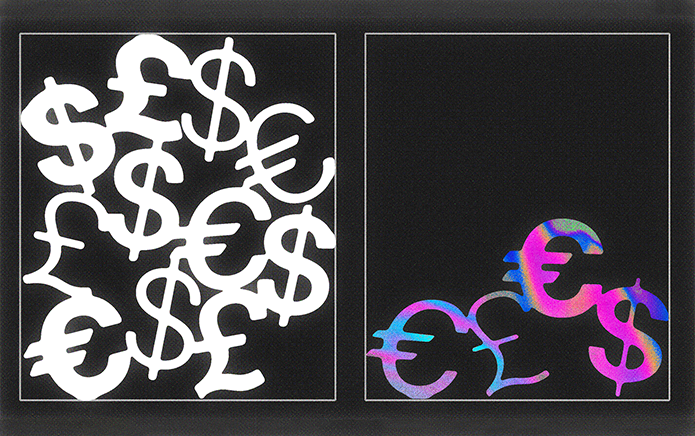A survey carried out by YouGov in 2019, commissioned by LinkedIn and UK Black Pride, found that LGBTQIA+ people in the UK earn around £7,000 less than their straight counterparts. In his 2022 paper, Professor Nick Drydakis from Anglia Ruskin University found that gay men’s earnings were 6.8% lower than those of comparable straight men, while bisexual men’s earnings were 10.3% lower than those of heterosexual men.
Separately in the US, an HRC Foundation analysis conducted in 2022 of nearly 7,000 full-time LGBTQ+ found LGBTQIA+ workers earn around 90 cents to the dollar that every straight person earns. The gap widens for LGBTQIA+ people of colour, trans people and non-binary people.
Data also shows that workplaces are not well equipped to close the gap. A poll of around 1,000 HR managers from the Trades Unions Congress (TUC) revealed one in five workplaces don’t have any policies in place to support their LGBTQ+ staff. And concerningly, data collected by UK charity Just Like Us showed that a quarter of young LGBTQIA+ adults went back in the closet when they started work.
How can we report on the wage gap?
Despite the number of studies that have been conducted on earnings discrepancies, there’s a long way to go when it comes to data reporting. While gender wage gap reporting is mandatory in the UK for companies with 250 or more employees, employers are not required to collect or report information on ethnicity wage gaps or LGBTQIA+ wage gaps.
“One of our big asks is that the government include us in the big statistical surveys so we understand what is happening to the community at a national level on a statistical level,” said Quinn Roache, policy officer at Trades Union Congress.
“But I worry a lot that when we start getting the data at a national level or employers are getting the data, that it won’t be right… If we get pay gap reporting for LGBTQ+ issues, and we have employers saying they have no pay gap, I would say let’s look at your data. Are you only surveying employees in the top roles? I would say what you have is a monitoring issue in terms of the quality of groupings.”
While gender wage gap reporting is mandatory in the UK for companies with 250 or more employees, employers are not required to collect or report information on ethnicity wage gaps or LGBTQ+ wage gaps.
TUC has found only one in eight employees monitor the LGBTQIA+ pay gap. Ken Janssens, co-founder of Windō, a platform that compares organisations diversity, equity and inclusion progress, notes that when companies report on the sexual orientation pay gap, they report on the L, G and the B in LGBTQ+ – not the Q and not the T. Currently, only 15 companies voluntarily share their sexual orientation pay gap data, and the average gap is 8.8%.
Even when companies are reporting this data, it’s important to keep certain factors in mind such as visibility and data inclusion. “It’s important that companies share how many employees have participated in [self-identification],” says Janssens. The data won’t really start feeling representative when reporting is at around 80% or 90% participation.
The data may also show certain discrepancies. In his study, Professor Drydakis found that lesbian women’s earnings were 7.1% higher than those of comparable heterosexual women. This “presents a puzzling issue,” he says, but there could be many reasons for this.
“A peripheral explanation for the lesbian earnings premium may revolve around women with children earning less than those without children,” Professor Drydakis says. “Additionally, lesbian women might demonstrate greater dedication to the labour market as they are less likely to rely on a higher-earning (male) partner for financial support, potentially leading them to invest more in their careers.”
